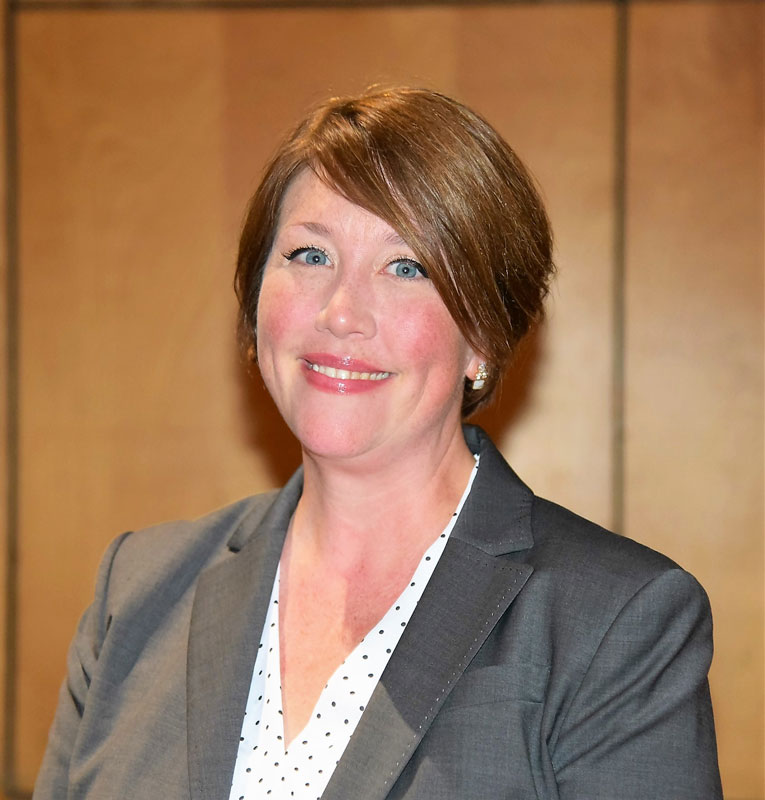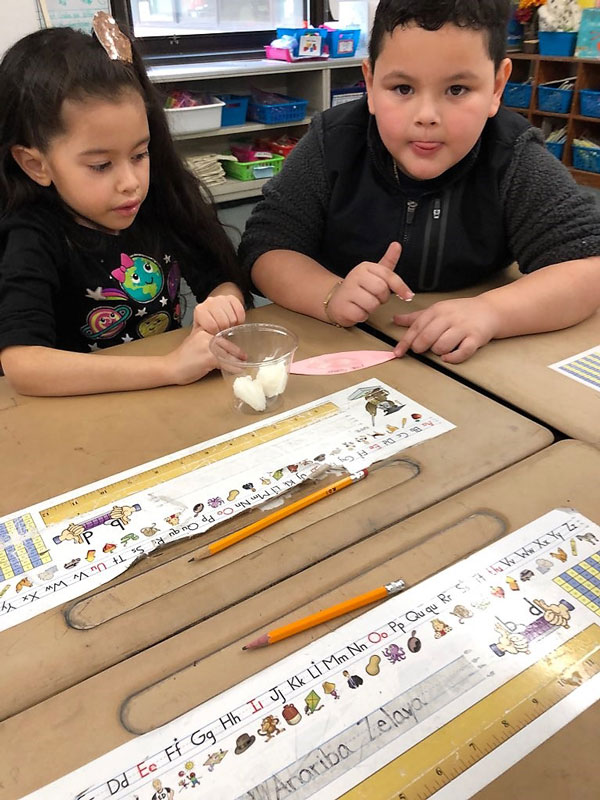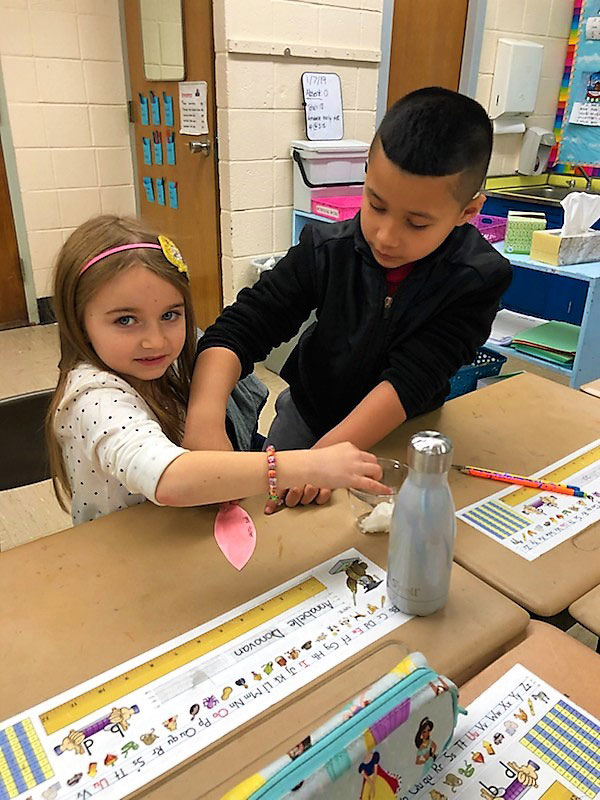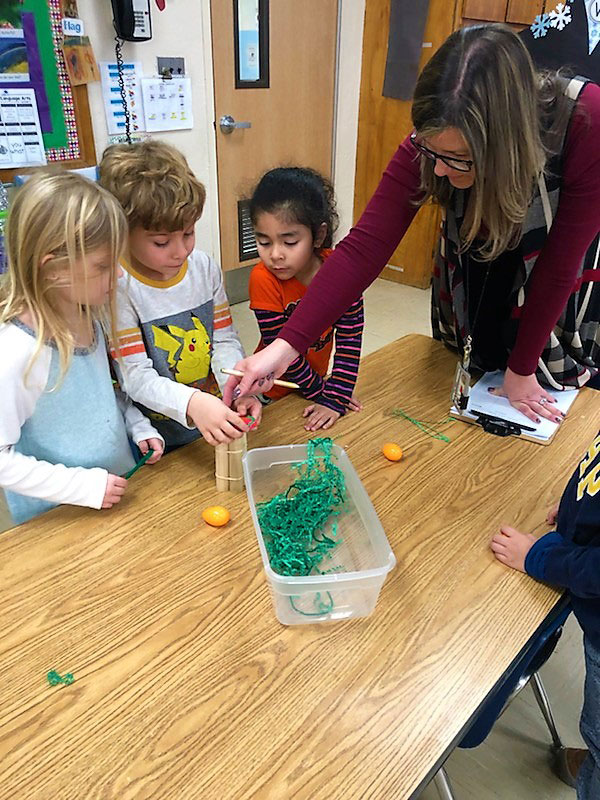Huntington UFSD’s elementary school students have always loved studying science. That’s been true for decades, if not for hundreds of years. After all, the first day of public education class was on February 11, 1657. That’s a long time ago, but the love of all things science continues today.

Huntington's Director of STEM Jill N. Johanson
Huntington’s four primary schools (as well as fourth and fifth graders at Woodhull Intermediate School) are using new science kits from Oneida-Herkimer-Madison BOCES upstate. These new materials are quarter-long units that match the new state science learning standards and also help students prepare for the fourth grade state science assessment.
“These new state learning standards require that students not only learn science content, but they have to learn the practices (or skills) of scientists and engineers as they learn the science concepts,” Huntington Director of STEM Jill N. Johanson said. “Examples of the eight practices include analyzing data, designing a model, communicating information and making arguments from evidence.”
On a typical recent day, science study was thriving across the district. Here’s a sampling of what was taking place:
- In teacher Stephanie Winzer’s kindergarten class at Southdown School students engineering bird nests that needed to remain on top of a tree and hold three eggs. “Stephanie’s class was engineering and the students had to work together to design, build and test their nests to see if they met the specifications,” Ms. Johanson said.
- In teacher Joanne Tures’ second grade class at Washington School students were modeling landforms, including plateaus, mountains and plains and even bodies of water in New York using clay and a map of the state. “Modeling is an important skill that all scientists need to be able to utilize when studying a phenomenon,” Ms. Johanson said.
- In teacher Kara Shelley’s first grade class at Jefferson School students learned about animal adaptations, including how water birds have a coating of oil on their feathers to waterproof them. The youngsters performed an experiment to show how feathers coated in oil make the water run off or bead up, while the feathers without the substance get wet and the water penetrates through.
“Kara’s class was conducting an investigation,” Ms. Johanson explained. “They tested pink ‘feathers’ with Crisco oil and red ‘feathers’ without Crisco by dropping water on them and observing the results. This led them to the conclusion that water birds need oily feathers to both swim and fly.”
Mention the word “science” and Huntington elementary school students always get excited. This phenomenon has spanned the generations and is just as true today as it was during the earliest days of public education in the community.
“Science teaching and learning have really changed just in the last couple of years,” Ms. Johanson said. “It has gone from learning facts to being focused on learning the process of doing science and being an engineer. This quote by science historian and writer Michael Shermer encapsulates it: ‘Science is not a thing. It’s a verb. It’s a way of thinking about things. It’s a way of looking for natural explanations for all phenomena.’”
Jill N. Johanson Profile
Ms. Johanson has been the Huntington School District’s director of STEM (science, technology, engineering and mathematics) since July 2017. She previously served as chairperson of elementary grade level STEM for one year.
Ms. Johanson obtained an undergraduate degree in biology and chemistry with a minor in education at Bucknell University in 1998 and went on to earn a Master of Arts in secondary school science education at Columbia University’s Techers College in 2005. She studied for her state administrative certification at the College of St. Rose.
Prior to coming to Huntington, Ms. Johanson taught Advanced Placement chemistry, organic chemistry and biochemistry at Regis High School in Manhattan from 2000 to 2010. She taught AP and honors chemistry at Lynbrook High School from 2011 until the time of her recent appointment in Huntington. She also served as Lynbrook’s science department chairperson for grades 6-12.
Before embarking on a career in education, Ms. Johanson worked for two years for Merck & Co. as a research associate in the medicinal chemistry department, engaging in drug discovery research.
Over the course of her career, Ms. Johanson has piloted the use of new classroom technologies, led students on an international service trip to Kingston, Jamaica, participated in national and international professional development programs and mentored new science teachers.
Ms. Johanson maintains professional membership in the National Science Teachers’ Association, Science Teachers’ Association of New York State and the Long Island Association for Supervision and Curriculum Development and serves on the advisory board of the Long Island STEM Education Leadership Association.



